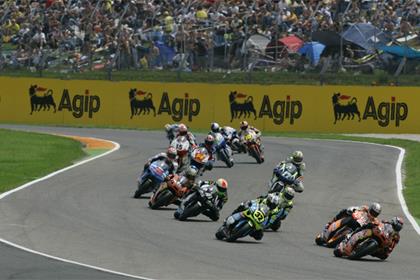Moto2 600cc four-stroke rules unveiled
Rules for the new 600cc class that will replace the 250cc two-stroke world championship in 2011 have been finalised, with the new series to be called Moto2.
Details of the new class were confirmed at a meeting of the Grand Prix Commission in Barcelona this week, and will feature four-stroke 600cc engines running a maximum of four-cylinder.
Revs will be restricted to 16,000rpm for four-cylinder engines, 15,500rpm for three-cylinders and 15,000rpm for twins.
Pneumatic valves, oval pistons and carbon brakes are banned and teams will have to use a controlled ECU.
A claiming rule will also be included whereby any team can purchase the race winning motor for 20,000 Euros and only one bike can be scrutineered at every race, with a limit on two engines per weekend.
Below are the key regulations.
ENGINE
4-stroke engines only.
Engine capacity: maximum 600cc.
4 cylinders maximum.
No oval pistons.
Engines must be normally aspirated. No turbo-charging, no super-charging.
Engine speed limited to maximum: 16,000 rpm. 4-cylinder engines 15,500 rpm. 3-cylinder engines 15,000 rpm. 2-cylinder engines An electronic system supplied by the Organisers will be permanently attached to monitor and control engine speed.
Pneumatic valve operation is not permitted.
Inlet and Exhaust valves must be of conventional type (reciprocating poppet valves). Variable valve timing or variable valve lift systems are not permitted.
Only wet-sump type engine lubrication systems are permitted.
Minimum weight of complete engine with throttle body, dry:
53 kg 4-cylinder
50 kg 3-cylinder
47 kg 2 cylinder
INLET AND FUEL SYSTEM
Variable-length inlet tract systems are not permitted.
Only one throttle control valve per cylinder is permitted. No other moving devices are permitted in the inlet tract before the engine intake valve.
Throttle bodies will have a maximum internal diameter (must be perfectly circle except for the area of dent or groove to allow the injector to come out) at engine side out-let of:
42 mm for 4-cylinder
48 mm for 3-cylinder
59 mm for 2-cylinder
Fuel injectors will be restricted to a defined type (tba, based on cost).
EXHAUST
Variable length exhaust systems are not permitted.
Noise limit will be a maximum of 120 dB/A, measured in a static test.
GEARBOX
A maximum of 6 gearbox speeds is permitted.
A maximum of 3 alternate gear ratios for each gearbox speed, and 2 alternate ratios for the primary drive gear is permitted. Teams will be required to declare the gearbox ratios for each gear used at the beginning of the season.
Electro-mechanical or electro-hydraulic clutch actuating systems are not permitted.
IGNITION AND ELECTRONICS
Data logger system will be supplied by the series organiser.
Only the ECU/fuel injection control units supplied by the series organiser are allowed to be fitted to the motorcycle. Electronic control units include the timing transponder, engine RPM control, and datalogger systems. No other electronic control or datalogging systems will be allowed on the motorcycle.
The price of ECU unit made by each engine manufacturer must be equal to or less than JPY75,000 (about Euro650).
CHASSIS
Chassis will be a prototype, the design and construction of which is free within the constraints of the FIM Grand Prix Technical Regulations. The frame, swing-arm, fuel tank, seat and cowling are forbidden to use from a non-prototype as series production road-going motorcycle.
Minimum Total Weigh
135kg for 4-cylinder
130kg for 3-cylinder
125kg for 2-cylinder
No carbon brake discs.
TYRES
The number of slick tyres allocated to each rider per event will be controlled.
MATERIALS
The following components must be made from iron-based alloys:
Valve springs, camshafts, crankshafts, connecting rods, piston pins, brake discs.
Engine crankcases and cylinder heads must be made from cast aluminium alloys.
Pistons must be made from an aluminium alloy.
GENERAL
Number of machines: the team can scrutineer only one motorcycle per rider.
Number of engines: a maximum of 2 complete engines per rider is permitted at any event. Teams will be required to register engine serial numbers at Technical Control on the day before the first practice.
The engine (excluding exhaust, throttle bodies and ECU) used in a race is available to be purchased by another competitor in the same race for a fixed price of €20,000 (Euro). Such purchase request must be made in writing to Race Direction within the protest period, that is within 60 minutes after the official end of the race. The transaction and delivery will be completed immediately at the end of the 60-minute protest period and will be underwritten by IRTA. Teams refusing to sell when presented with a valid request will be disqualified.


